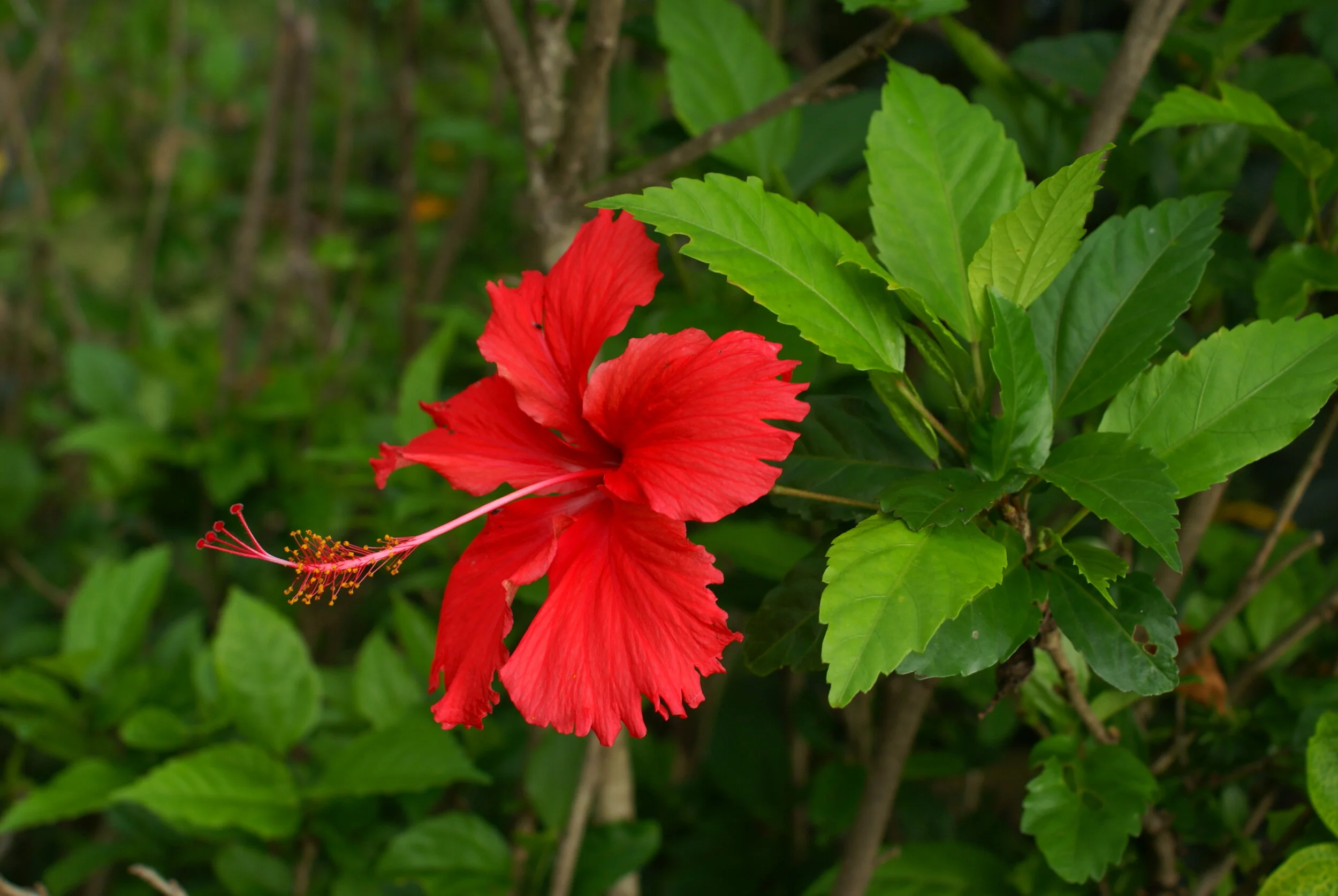The genus Hibiscus contains some of the most widely recognized and venerated plants on Earth. Take a trip to any garden center and nursery and you are almost guaranteed to find numerous brightly colored Hibiscus cultivars. No doubt many of you reading this probably have one growing in or around your home. For as common as these cultivars are, most of the species that were involved in producing them are either critically endangered or feared extinct in the wild.
Many of the common tropical Hibiscus cultivars you are likely to encounter involve Hibiscus rosa-sinensis and around 10 distinct species hailing from either one of the Mascarene islands in the Indian Ocean or one of the numerous islands in the central and south Pacific. All of these plants belong to a subgroup within the mallow family known scientifically as Lilibiscus. I won’t bore you with the taxonomic details but what is important to know is that, despite their wide and often non-overlapping distributions, members of this group readily hybridize with one another. It’s this penchant for hybridization that has made them so popular with plant breeders over the centuries.
Hibiscus rosa-sinensis by B.Navex licensed under CC BY-ND 2.0.
In fact, the ease with which these plants are cultivated and bred has obscured the origins of the aforementioned Hibiscus rosa-sinensis. Today, this lovely red mallow grows wild throughout many regions of the Asian continent, however, experts believe that many of these populations represent “escapes” from cultivation. This species has enjoyed so much popularity over the years that no one is quite sure where it originated. Sadly, the same cannot be said for its relatives.
Islands both big and small are metaphorical playgrounds for evolution. This is why islands often boast species of both plant and animal that are found nowhere else in the world. Unfortunately, many of the factors that make islands such hot spots for evolution also make them hot spots for extinctions. Isolation, limited land area, and stochastic events combine to make it all too easy to lose island flora and fauna for good. Add humans into the mix and things get even worse. Humans have been the cause of countless island extinctions ever since our species began island hopping.
The critically endangered Hibiscus fragilis. By Wendy Strahm licensed under CC BY-ND 2.0.
For the case of these 10 members of Lilibiscus, a human presence on their islands of origins has been devastating. Habitat loss due to farming and development and the introduction of invasive species have all but wiped out most populations. For species like Hibiscus fragilis, an endemic of Mauritius, their numbers have been reduced to only a small handful of plants in the wild. Other species like Hibiscus storckii, an endemic of Fiji, were thought to be completely extinct until a few plants were rediscovered. It would seem that after the initial collections were made and brought into cultivation, no one gave these plants much thought. Forgotten, they dwindled in numbers until few, if any, remained.
As if things weren’t already bad for these rare Hibiscus species, humans are adding yet another nail in the coffin for many of them - hybridization. Because Hibiscus are so popular as garden plants, cultivars are commonly planted in gardens wherever climates allow. As I mentioned above, members of the Lilibiscus group readily hybridize with one another. Whereas cultivars are guided by human intervention, that doesn’t mean they need humans to mix their genes. If a cultivar is planted in the proximity of a wild species, there is nothing stopping pollinators from visiting and exchanging pollen with both plants.
Hibiscus storckii was once thought to be extinct until a few plants were rediscovered. BY Jeff Delonge licensed under CC BY-ND 2.0.
If a hybrid cultivar picks up new genes from its wild relatives, no big deal. Either those seeds will never be left to germinate or, if they do, a surprising new variety could be made. Things aren’t so innocuous when gene flow happens in the other direction. One of the biggest threats to the conservation of species like H. fragilis now comes from hybridization with garden Hibiscus. Cultivars are not selected for their ability to thrive in the wild. They are bred and selected for large, showy flowers and a prolonged blooming period. These are not good traits for a wild species with a very specific niche. As the remaining wild H. fragilis are swamped with hybrid genes from cultivars growing in nearby gardens, their offspring no longer contain the characteristics that makes this species unique. One or two hybrids every now and then is probably not an issue, but if those hybrids survive and flower, the stability and fitness of that population will gradually decline as repeated backcrossing occurs.
These issues are not restricted only to the species mentioned above. The tropical cultivars we know and love represent a hybridization complex of Hibiscus species such as H. arnottianus, H. boryanus, H. denisonii, H. genevii, H. kokio, H. liliiflorus, and H. schizopetalus. Nearly all of these species are suffering similar fates in their native range. However, there is a silver lining to all of this. Because Hibiscus often lend so well to cultivation, conservationists have been able to step in before some species are lost forever. Seeds have been collected for both seed banking and germination trials, cuttings have been taken and grown into clones as a means of preserving what genetic diversity remains, and botanical gardens around the world are now adding many of these species to their living collections.
Though the future is not certain for many of these plants, it is certainly looking much better than it was only a few decades ago. While human activity has caused most of these problems, our efforts are now critical in reversing at least some of the damage that has been done.



